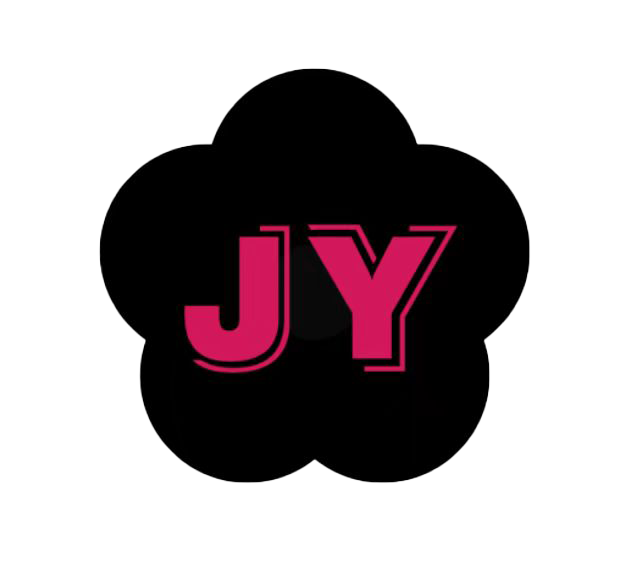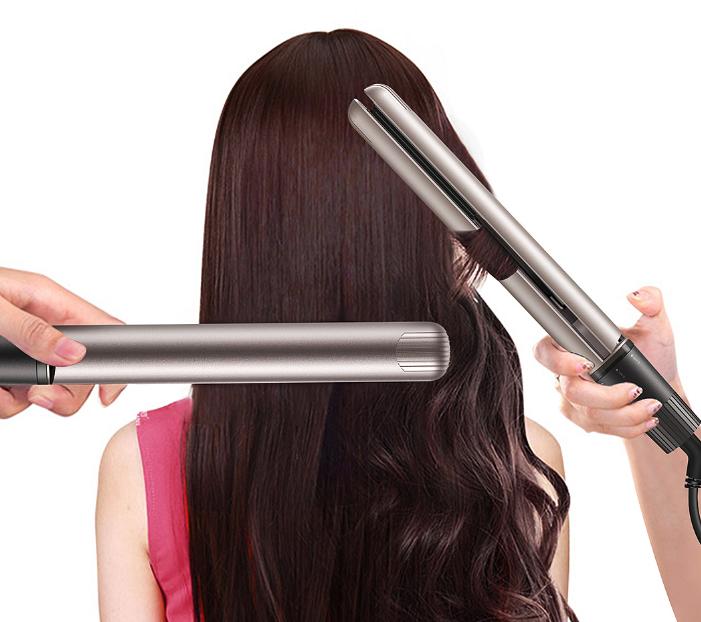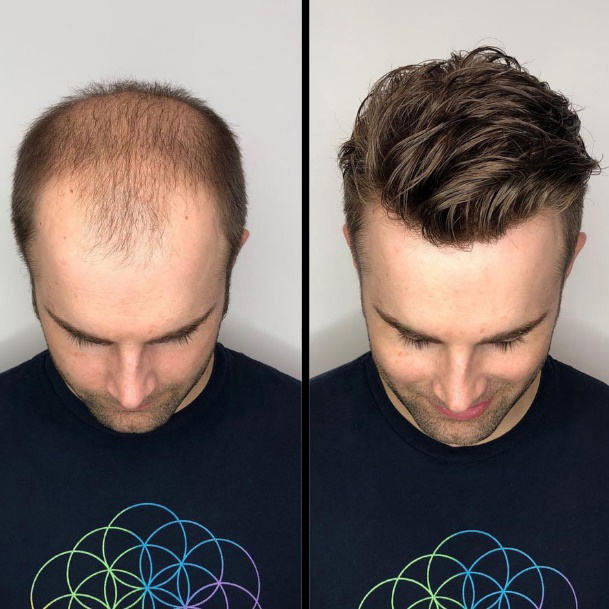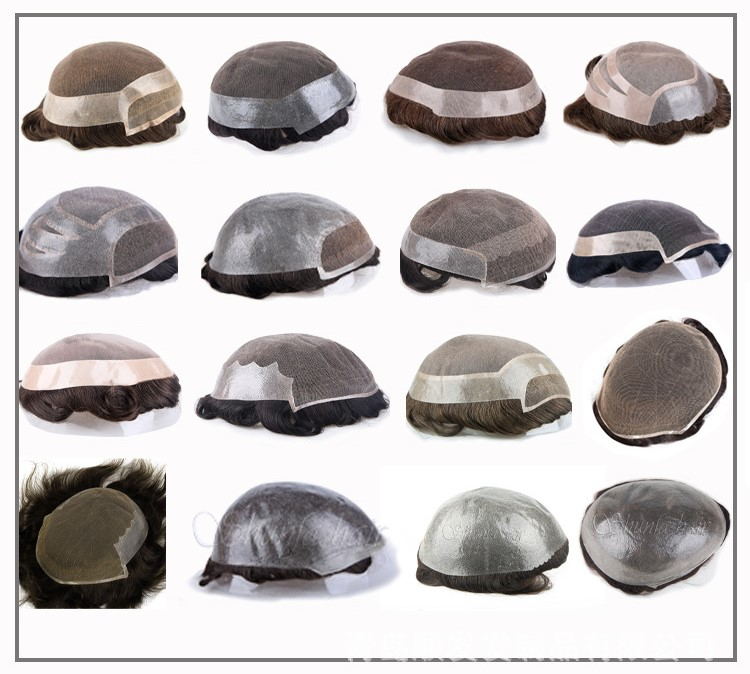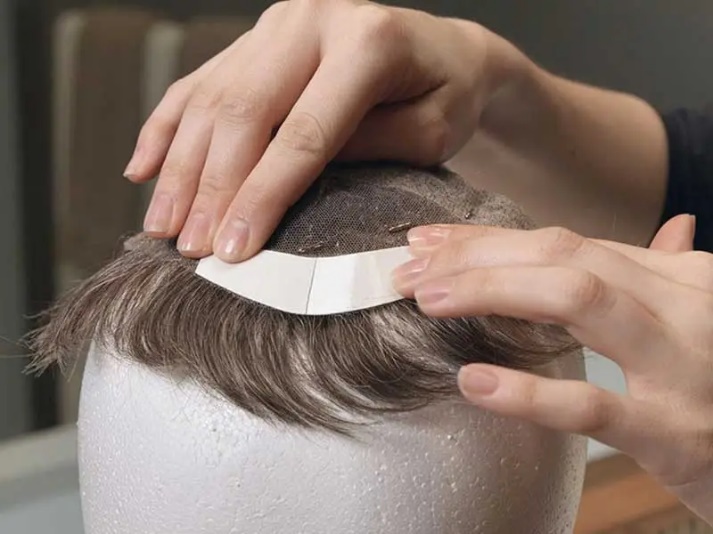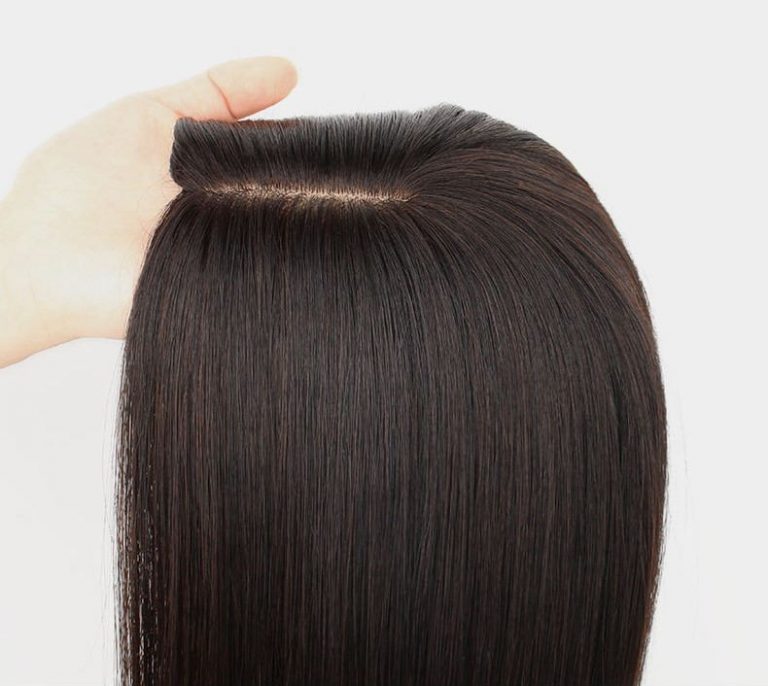Hair extensions are used to achieve the following:
- To get longer hair
- To get thicker hair
- To add color
There are a multitude of different types of hair extensions and application methods. Some hair extensions are semi-permanent and require the assistance of a professional to apply, while others are temporary and are designed for daily use, and can be applied by yourself at home in a matter of minutes.
Hair extensions are also commonly worn for special occasions like weddings, proms, and other milestones in life. If you have a hairstyle in mind but can’t quite achieve it with your own hair, consider hair extensions or consulting with a trusted hair stylist to get their opinion on how hair extensions can help achieve your dream look.
Luxy Hair offers DIY clip-in hair extensions that are the easiest and safest way to get longer and thicker hair at home. Clip-in extension wefts come with the clips already attached to them. This means that you can simply take the wefts and easily clip them into your hair all by yourself, without any additional costs, time, or professional help. They are perfect for everyday use as well as those special occasions where you only want that transformation for a specific event.
What types of hair extensions are there?
There are multiple different types of hair extensions that differ mainly in their application method. Some are temporary, and others are semi-permanent.
When determining which type of hair extensions to choose from, consider booking a consultation with a hair extension technician, especially if you have interest in semi-permanent hair extensions. You’ll want to speak to a professional and determine if it’ll be the right solution for your hair, your hair needs, and your hair goals.
How do the different types of hair extensions work?
Clip-Ins
Clip-in hair extensions have clips sewn to the base of each weft. Those clips are then snapped open and applied to the roots of your hair and then snapped shut. Each weft is layered beneath your own hair to create an instantly longer and fuller look while remaining completely invisible. This type of extension can be applied by yourself at home within a matter of minutes and causes zero damage to your own hair. No professional help is required.
Tape-Ins
Tape-in hair extensions are pre-taped and then taped or glued together on both sides of a section of your hair. This method typically requires professional application as you need someone to align them with the roots of your hair, and then glue them using a heated tool. This is a semi-permanent solution that will need to be replaced every 1-2 months. It can cause damage to your hair as you’re applying heat and glue to your own natural hair.
Sewn-Ins
Sewn-in extensions is a lengthy process that starts off by braiding your natural hair into cornrows, then using a needle and thread to sew the weave into the braid or cornrow. This can take several hours to complete, and is typically recommended for those with thicker hair due to the tight application and strain it can cause on the scalp. A professional needs to perform this type of hair extension due to the complexity of it.
Micro Links
Micro link hair extensions are applied via a small silicone-lined bead that attaches tiny wefts of hair to small sections of your natural hair. A special tool is then used to secure the bead in place. A professional is required to apply these extensions due to the complexity and tools involved, and it can take severals hours to complete. While this particular style of hair extensions does not include heat or glue, the pressure and pulling of the micro link extensions can be damaging on the hair.
Wigs
Wigs come in many different lengths, colors, and sizes, and are applied to the hair topically. They are designed to cover your entire head and act as a replacement for your own hair. This is a DIY method of hair extensions which means it can be applied by yourself at home. This type of hair extension is ideal if you are experiencing excessive hair loss where you may not have enough hair for any of the other types of hair extension methods to secure on to.
What are hair extensions made of?
Hair extensions can be made with real human hair or synthetic hair. We recommend opting for human hair extensions as they will look the most natural, you’ll be able to handle them exactly as you do your natural hair, and they’ll last much longer.
Real Human Hair Extensions
Pros: Can last up to a year or longer, can be heat styled, can be dyed, they look natural, and can be washed just like your own hair.
Cons: Real human hair extensions are usually pricier and can cost you over $100 depending on the style.
Synthetic Hair Extensions
Pros: They are more affordable than real human hair extensions and can start at around $50 depending on the style.
Cons: They don’t last as long as real human hair extensions (1-3 months), they cannot be heat styled or dyed without damage to them, and they typically do not look as natural as real human hair. You cannot wash them.
What do the different weights mean?
When you see weights listed with hair extensions, this is indicative of how thick the set will be (how much hair is attached to the wefts). Most companies will measure the weight of their extensions in grams. The higher the grams, the thicker the extensions will be.
For example, a full set of extensions that is considered to be lightweight (not much hair attached to the weft) would be somewhere around 120-140 grams. Whereas, a full set of extensions that is considered to be thick and heavy in weight (a lot of hair attached to the weft) would be around 220 grams or more.
To select the right weight for your hair type, you need to first determine what your own hair thickness is (thin, medium, or thick). It’s always suggested to opt for a weight that matches your hair thickness, then the hair thickness you want to achieve.
The reasoning behind this is because you may end up with a set that you have difficultly blending in with your hair. If you have thin hair and want as much volume as possible, we would not suggest you opt for the heaviest set available (like 220 grams or more). This may result in the extensions weighing too heavy on your hair and as a result causing discomfort. A light to medium weight (between 120-180 grams) will still allow you to achieve a full and voluminous look without the discomfort.
Similarly, if you have very thick hair and are not concerned about adding more thickness, we would not suggest opting for a lighter weight set (anything less than 220 grams) as the extensions will be too thin for your hair and may appear stringy-looking when applied in.
Do hair extensions ruin your hair?
Semi-permanent hair extensions are likely to cause some form of damage to your hair due to the bonding, gluing, and constant pulling. Whereas, temporary hair extensions, like clip-ins, cause absolutely no damage to your own natural hair. This is because they are simply clipped into the roots of your hair and are removed on a daily basis, so the pulling is minimal. If you are concerned about your hair health or the longevity of your hair, we suggest opting for a temporary, DIY hair extension solution like clip-ins or consultation with a hair extensions technician for a second opinion.
How do I choose the right color of hair extensions?
The most important factor when choosing the right color of hair extensions is to consider the undertones in your hair. Whether your hair’s undertones lean warm, cool, or neutral, you’ll want to ensure you’re selecting a color that matches your undertones best.
Take a look at your hair in natural lighting (facing a window or outside in natural sunlight) and examine the colors you see in your hair. If you see yellow, golden, or red hues throughout your hair, you have warm undertones. If you see blue or green hues throughout your hair, you have cool undertones. If you think you are somewhere in-between, you likely have neutral undertones.
When searching for the right hair extension color, keep an eye out for the product descriptions as they’ll typically make note of what undertones are included in the hair. You can also play the name game as oftentimes companies will use similar terminology when defining warm, cool, and neutral colors.
Warm: Look out for names that include Golden, Butterscotch, Honey, Chocolate, Mocha, Cherry.
Cool: Look out for names that include Platinum, Ash, Cool, Walnut, Icy.
Neutral: Look out for names that include Natural, Medium, Neutral.
Can I wash, heat style, and dye hair extensions?
Regardless of the hair extension method whether it’s temporary or semi-permanent, as long as you are using real human hair, will you be able to treat it just like your own hair. This includes the ability to wash, dye, and heat style it.
If you are working with synthetic hair, its generally not advised to dye it as it’s already been chemically treated at the manufacture level and may not be able to withstand the dyeing process. Similarly, heat can damage synthetic hair and cause it to melt, and extensive washing can cause a change in quality.
When dyeing real human hair extensions, it’s best to steer clear of any bleach as this can damage the quality of the hair. While it is made of real human hair and can take to bleach, this may result in a quality change that may be hard to reverse. Unlike our own hair which is constantly being revitalized by the natural oils on our scalp, hair extensions will not get that same form of natural moisturizer, and as a result it may require more upkeep and care.
Just like your own hair, real human hair extensions can be washed. It’s safe to use most shampoos and conditioners that you’d use on your own natural hair, however, it is recommended to be cautious of using products that include ingredients that can dry out the hair. This includes sulfates and alcohols.
Before using any heat tools, spray heat protectant onto your extensions as you would your normal hair, and use a low to medium heat setting. Ensure the tool is constantly moving on your extensions and never static in one place for too long in order to prevent heat damage.
How long do hair extensions last?
The lifespan of hair extensions will vary depending on the method you opt for and the care they receive. Generally speaking, temporary hair extensions like clip-ins will have a longer lifespan as you don’t wear them consistently as you would semi-permanent extensions which are in your hair 24/7.
Clip-Ins: 6-12 months
Tape-Ins: 4-8 weeks
Sewn-Ins: 6-8 weeks
Microlinks: 3-4 months
Wigs: 10-12 months
